Guantanamo Bay: What next for Cuba prison camp?
- Published
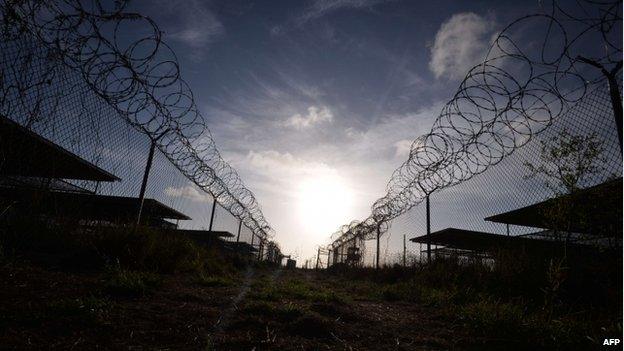
Obama vowed to close it in 2009
After years of stagnation, there's been a burst of activity in transferring inmates out of the controversial Guantanamo Bay detention camp. Where will it end?
Five detainees - all Yemenis - are leaving Guantanamo, four to go to Oman and one to Estonia. They are the latest in a flurry of transfers out of the prison, part of a new effort to close the facility down.
Over the past year, 28 detainees have been transferred out of the prison and taken to countries such as Kazakhstan and Uruguay.
This leaves 122 men who are still held at Guantanamo. One of them is Shaker Aamer, the last British resident being held in Guantanamo Bay.
Mr Aamer, who is from London, has been held at Guantanamo since 2002.
Prime Minister David Cameron is visiting Washington this week and is planning to ask US President Barack Obama about Mr Aamer's release.
There is one British resident, who has been cleared for release, still in Guantanamo Bay, as Aleem Maqbool reports
Today Mr Aamer is waiting to hear if he will be allowed to leave - as are others at the prison.
On Tuesday afternoon, one man at the prison was watching football on a big-screen television in a large room. He was held in a cellblock in Camp Six, an area of the compound where the "compliant" prisoners, as they're known, are housed.
He and other detainees were milling about in a communal area of the prison that could be seen through a one-way mirror. I was visiting the prison with three of my colleagues from the BBC and was escorted around the place by military officers.
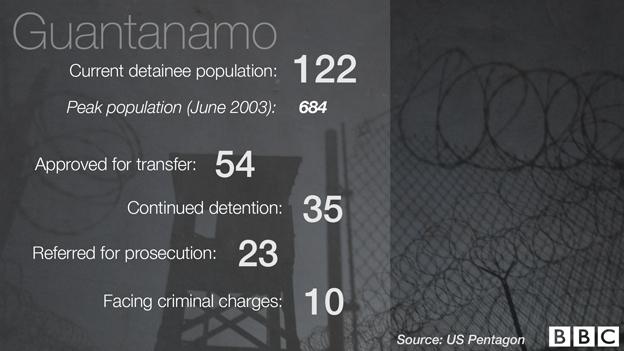
A sign in the hallway says: "Close door quietly." The silence was broken only by the sound of keys clanking as a guard opened a door.
The hallway outside the communal area smelled like French coffee. Inside, an apple and several pears were displayed on a table. Another man in loose-fitting, tan pants was leaning back in a white plastic lawn chair, with his legs stretched out. He could have been waiting at a bus stop.
"They can do nothing but wait," said David Remes, a Washington-based human-rights lawyer who was visiting his clients at the prison on Wednesday - and spoke with me after getting off a ferry at the island. "One detainee told me that patience was their only weapon," he said.
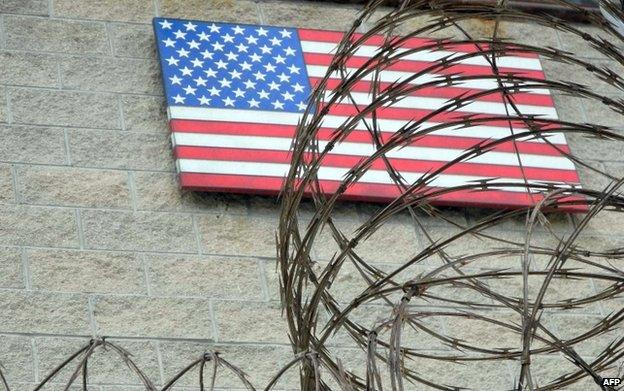
The obstacles to getting him and other detainees out of the prison - and closing the place down - are immense.
Before the latest transfers, 59 detainees have been approved for transfer, according to a Defense Department spokesman. Ten men, including Khalid Shaikh Mohammed, are facing criminal charges.
In addition 58 detainees fall into various categories. These range from individuals whose cases may be reviewed - and could then be released - to men who have never been charged with a crime and are unlikely to be released from detention.
It is not clear where the individuals who are not cleared for release will end up. They could be transferred to other countries - or to prisons in the US. Some of these prisoners are seen as a risk, and this is one of the most contentious issues regarding Guantanamo.
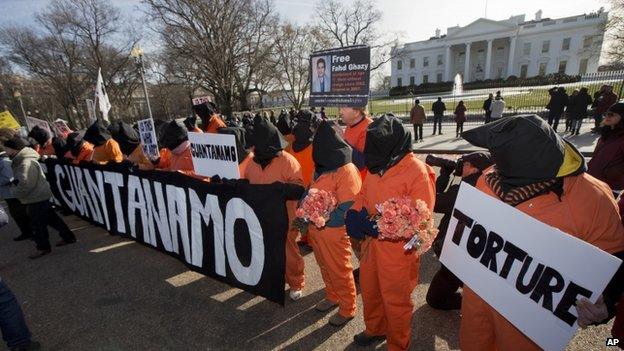
In January 2009 Mr Obama issued a directive that ordered the closing of Guantanamo. But congressional leaders baulked, saying they did not want the detainees to be released - and that none of them could be transferred to prisons in the US.
This week Republicans in Washington raised concerns about detainees who could be released and then pose a threat to Americans.
Senator Kelly Ayotte, a Republican from New Hampshire, introduced legislation that would "enhance" the prohibitions that have already been placed on moving detainees out Guantanamo.
The measure states that government funds cannot be used to place the detainees in the US. It also places even more restrictions on transferring them to other countries.
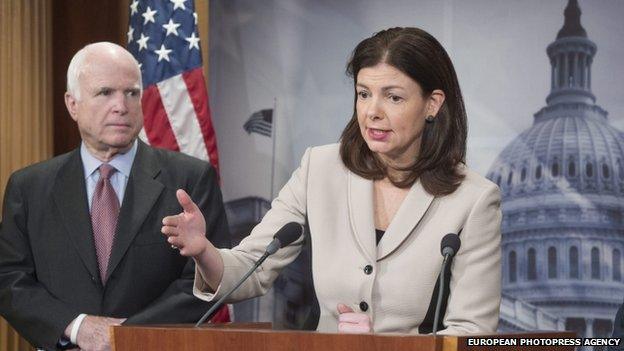
Senator John McCain said these steps are necessary because some of the detainees who were released in past years "re-entered the fight", returning to militant groups.
Speaking on background, a State Department official said that only a small number of Guantanamo detainees who have been released have returned to militancy, despite the recent accounts in the media.
Nineteen percent of the men who were released before 2009, the year that Mr Obama took office, were "confirmed of re-engaging", said the official. Afterwards the percentage dropped to 6.8%.
"Nearly half of the former detainees confirmed of re-engaging are either dead or in custody," said the official.
- Published10 October 2014
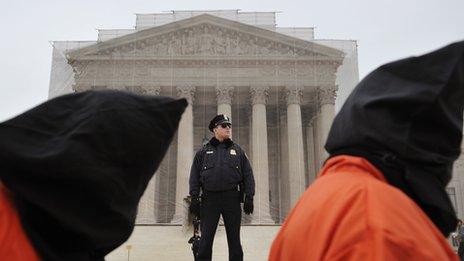
- Published25 February 2014

- Published11 November 2013
